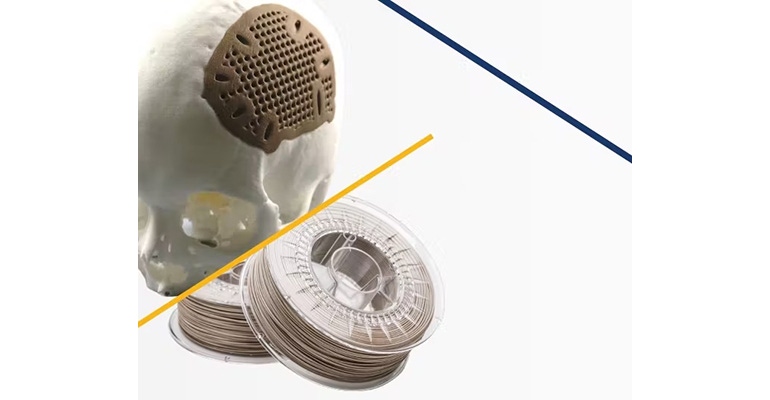Implantable PEEK Polymer Optimized for 3D Printing
Invibio’s PEEK-Optima AM filament enables point-of-care printing of medical devices for orthopedic and related procedures.
March 14, 2023

An implantable polyether ether ketone (PEEK) polymer optimized for 3D printing has been introduced by Invibio Biomaterial Solutions, part of Victrex plc. Specifically engineered for fused deposition modeling (FDM) and fused filament fabrication (FFF) additive manufacturing processes, PEEK-Optima AM filament expands Invibio’s portfolio of biocompatible polymers, which are available as powders, granules, and rods for processing methods including injection molding.
Compared with other plastics processing techniques, additive manufacturing enables otherwise impossible to produce complex geometries and can achieve significant part consolidation. FDA has published 3D printing technical guidance for medical device designers and manufacturers, and Invibio noted in the press release that it is able to support device OEMs in the navigation of regulatory pathways for PEEK-Optima additive-manufactured devices.
The introduction of the 1.75-mm monofilament will enable healthcare facilities to make custom PEEK devices at the point of care with FDM- and FFF-compatible machines. This brings numerous advantages to patients and healthcare professionals, added Invibio, particularly in craniomaxillofacial and other specialty procedures that demand design precision and rapid execution.
“Invibio’s new PEEK-Optima AM filament has been launched to support medical device manufacturers as they assess the FFF/FDM route of additive manufacturing to help support the next generation of devices for a variety of demanding medical applications, such as CMF devices, spinal, and orthopedic implants,” said Dr John Devine, medical business director at Invibio. “We are excited to be able to offer the industry a 3D-printable form of PEEK-Optima polymer — a material that has already been implanted into more than 15 million patients worldwide,” he added. “As 3D printing becomes a realistic option for developing medical devices and implants for a growing number of medical device manufacturers and hospitals, the industry must now select high-quality, high-performance biomaterials to enable commercialization of the next generation of medical devices.”
You May Also Like


